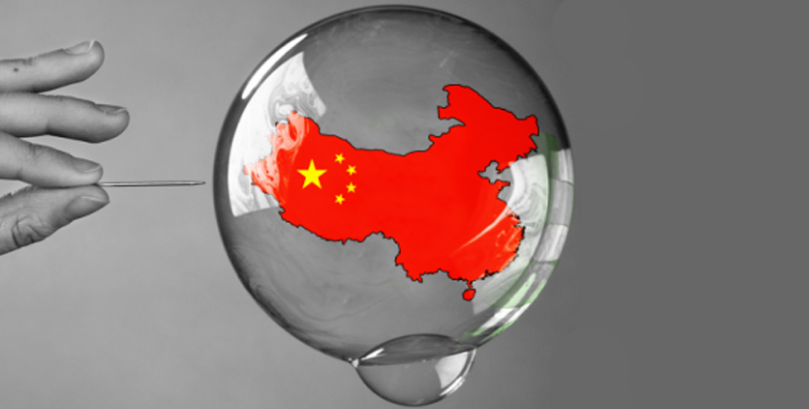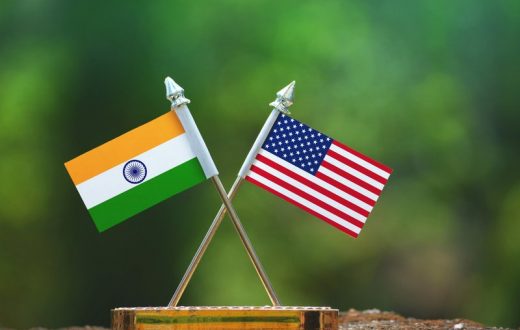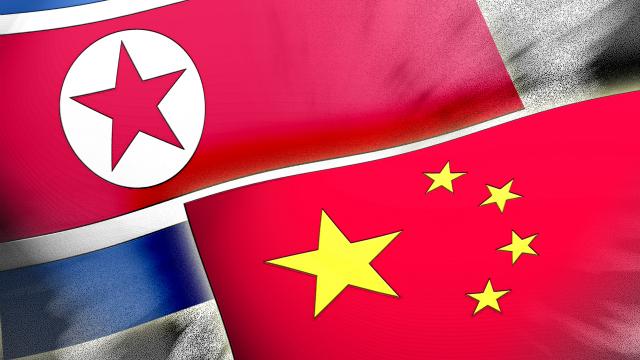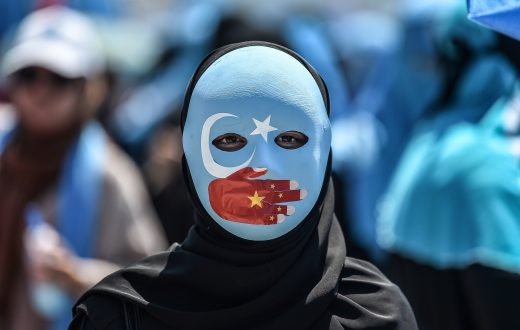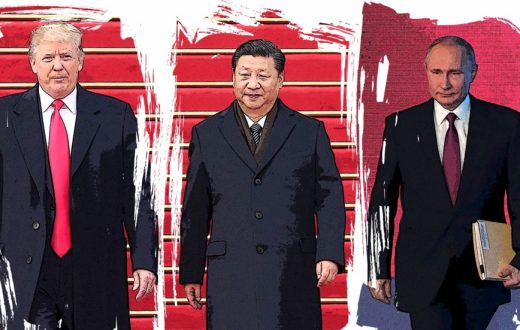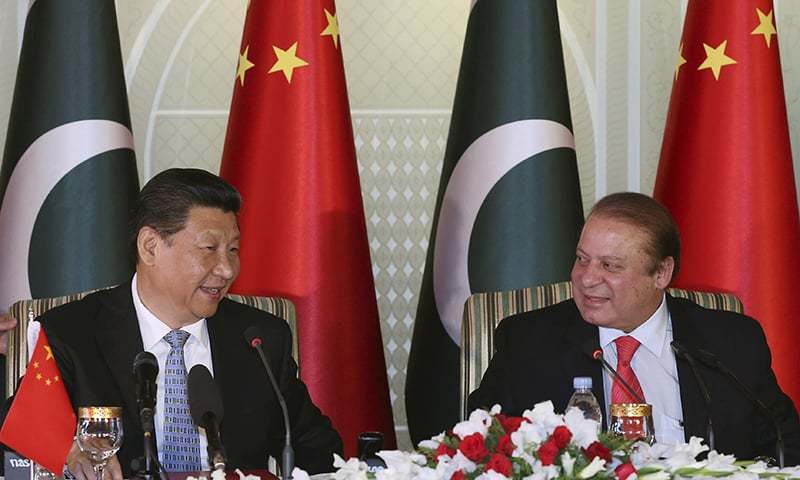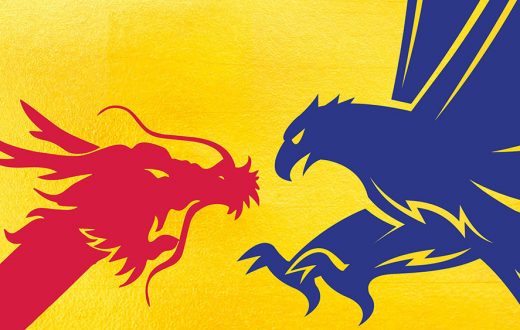Indo-Pacific Singularity and China
Indo-Pacific nowadays is the one of the most dynamically region in Global Geopolitics. In fact, many major powers have been set their sight to expand their influence in the region and facing off China. Starting with US “Pivot to Asia in Obama period to Free and Open Indo-Pacific in Trump’s era”, India’s “Act East Policy”, Japan’s “Free and Open Indo-Pacific”, and China’s “Belt and Road Initiative”. These four major powers have been playing out their policy with their capability, especially China.
In Indo-Pacific, China’s policy is special. What makes it special is the policy and China’s will is very visible. From their aggressiveness in South China Sea, growing military influence in Indian Ocean and also the Belt and Road Initiative, We can see not only a glimpse of China’s ambitions but their vision as well. They translate policies into a significant step in economic cooperation with Littoral states such as Pakistan and South Africa and always involve in Southeast Asia meeting.
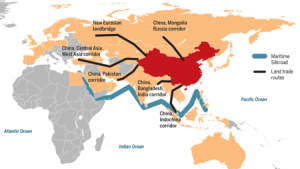
Furthermore, China’s Belt and Road Initiative started to have an impact. In various opportunities, China’s clearly stated that they are not aim to become next hegemony, but like human behavior, statement is not always synchronize with action.
The term Indo-Pacific for any major powers is consisting of region in Indian Ocean and Western Pacific. Maybe it’s over simplification, but the growing political turmoil in these two oceans at the center has been justified my simplification. From historical, geographical and economic view, there is no doubt that these two have certain value which will be source of conflict in the near future. Moreover, in continental value, these two oceans are between Asia and Africa continent.
How China Make Solid Influence in the Region
China and major powers like India, Japan, and US share similar view in regards of Pacific and Indian Ocean. But in my opinion, China’s is several steps ahead in attempting to conquer the oceans. The reason pictured in one sentence: Maximum utilizing their economic power. China harnesses the momentum of West decline and stagnant economy to make economy relations with developing countries. Economic crises in 2008 in my view, leaving deep wound in west economic which last until today. One to note that most states in two Oceans are developing and some are emerging countries. They need substantial amount of money to run their economic interaction (building infrastructure). With China’s economic growth, they become alternative solution in building economic relations in developing countries state of mind. Such conditions absolutely used by China to expand their influence. China’s provide more simple mechanism with their counterpart Japan and any other major powers and it makes China first priority. China- Pakistan economic relations with amount of 62 billion dollar and China-ASEAN in free trade agreement framework could be lead example of China’s economic power shaping countries relations and behavior.
China’s growing influence in terms of economic power has placed developing countries in the state of dependency. This becomes “another weapon” for China. Growing dependency within developing countries in Southeast Asia and Africa has made China’s position to do “just anything” wide open. The South China Sea conflict it’s the best example in explaining “state of dependency”. China’s aggressiveness in South China Sea with their nine-dash line has become a conflict of sovereignty. Military build-up in South China Sea in Spratly and Paracel islands has violate international law and becoming source of conflict between Malaysia, Philippines, Vietnam, Brunei Darussalam and Taiwan. They become “claimant state” because each other base their claim on UNCLOS. Philippines has report this violation to International court. The result is losing for China but they still continue their aggressiveness.
ASEAN institutions have fragmented in this conflict. Some has demand tougher stance for China and some are not (neutral and on China’ side). Indochina countries are in the latter position because they depend so much on China. Other countries are more refer to solve this problem with multilateral dialogue. As far as I know, ASEAN has framework in form of ARF and code of conduct. Even the dialogue also involving China in process, the result is not too satisfying, especially the Code of conduct. From 2003 until now, there has no significant progress even the draft has been produced, it’s not effective until it become legal binding.

ASEAN indeed put forward dialogue values, but with their dependency on China economic cooperation, the dialogue has become pointless. The South China Sea dispute ultimately demonstrates how more powerful actors can manipulate ASEAN’s weak multilateral dialogue process to advance grand strategic interests.
With the only established institution cannot hold China’s assertiveness, China’s becoming wilder in South China Sea. The latest update is China is building seven military base in SCS. If I refer to International law, China absolutely violate some of the regulation in UNCLOS, but the cases is not like that. In China’s view, they build military buildup base for defends interest. Even in the glimpse, China aggressiveness in SCS has proven that maybe China’s didn’t want to become world hegemony but for regional hegemony, China has embedded solid foundation on it.
What Would Others Do to Contain China?
For other world and regional major powers, China’s influence foundation has become wary. They fear that China’s policies in Indo-Pacific will slowly decreasing West influence. As we may know, US influence in Asia since Obama administration taking “Pivot to Asia” policy into practice has been great. In Trump administration, “Pivot to Asia” has transformed into Free and open Indo-Pacific Strategy.
Unfortunately, with Trump’s controversial policies in recent time has decrease some influence in Asia. US pulling back from Trans-Pacific Partnership have left such impression that US slowly leaving its Alliance. But the fact that we must know, US is the only country with capability to balancing China, even Japan cannot do much in East or South China Sea. Moreover, although China and US economic capabilities are vis-à-vis, there’s no denying that US military capability are far ahead compare to China.
Free and Open Indo-Pacific Strategy (FOIPS) in my point of view is a policy which not only to counter-balance China’s influence, but also regaining some influence caused by Trump controversial policies. During Trump presidency, he always urged his allies to pay for their own defense. This leaves his allies with mix feeling. The reason is because US are the important actor to counter China’s assertiveness in South China Sea. On the other side, Trump behavior is like leaving the impression and signaled that he’s decreasing US help to his allies. But, FOIPS has brought the fresh leaves.
In response to China’s Belt and Road Initiative in Indo-Pacific, Washington has provided aid with $60 billion dollar amount of money through the US International Development Finance Corporation. China’s willing to spend much amount of money to expand their influence, so in order to balance it, whether to do the same or with some alternative. But Trump is unique. In April, he launches trade war against China with elevating its tax in steel and aluminum by 25%. Trade war is still happening with US shown aggressiveness toward its economic policies. Trade war it’s not to decrease China’s influence in Indo-Pacific, but to decrease their economic capabilities so their signature weapon in international worlds slowly decreases.
On the other side, different measurement has been shown by Japan and India. For Japan, their current capabilities are not enough to fight China so they need alternatives to play. India’s has showing his interest in Pacific. In Indian Ocean region, India is the major power. But with China’s growing influence in Indian Ocean, they need to step up their game. At least, if China can expand their influence to Indian Ocean, there is no reason for India to not doing the same. Furthermore, India is not the only country that wants to counter China.
Narendra Modi visiting Shinzo Abe in the end of October has shown something. India with China in some prediction will be East dominant power in the future, but I think in India’s mind right now is how they contain China and gaining some influence in Pacific. Japan wants to contain China too and they have so much concern with them. China’s military buildup around the region has been alarmed Japan for some time. In short words, India and Japan share the same interest. Moreover, defense will be one of the top agenda when Modi visiting Abe. Ambassador Japan to India, Kenji Hiramatsu said that maritime cooperation was very important in the region and both countries are looking at ASEAN countries, including Indonesia and Vietnam for a trilateral cooperation.
Would Containment be Successful?
It’s been hard to say that major power effort to contain China has been successful. As I say in the top before, China’s several step ahead from major power. Military buildup in SCS and Indian Ocean, deep economic cooperation with developing and emerging countries like ASEAN countries, Pakistan and South Africa has shown that China really utilize the opportunity that lies in front of them. Even with Obama’s Pivot to Asia, they cannot stop China’s aggressiveness in South China Sea. India Act East Policy is one year late from Belt and Road Initiative and India have a lot to catch up.
Meanwhile, Japan and US has articulate Free and Open Indo-Pacific strategy (FOIPS) in recent years. But there is difference in implementation. Japan said that their strategy is not exclusive and include China as well IF they share same idea and vision with Japan. Historically, China and Japan has some history which China called “century of humiliation” when Japan and the West invade their country. For China, history is matter for them and contains many things to learn. Even if Japan-China relations becomes better, the relation maybe fragile and vulnerable because not only they have “dark” history but also in principle and values, they are different. As for US FOIPS, US itself find China as an enemy that needs to be taken down. They need to beat China so that US have a smooth way to expand their influence in the region. China’s assertiveness for them is big wall waits to be destroyed by them.
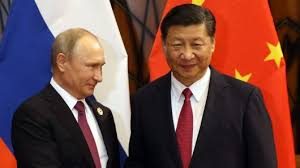
I think major powers effort to contain China will be tricky and challenging. China will absolutely have a way to counter the containment itself. Don’t forget in Indo-Pacific, we still have problem and uncertainties in Korean Peninsula. China is quite close to North Korea and they can give some influence with significant reward for them. US don’t want to spend more energy for them. But, US may be breathing freely, because France is coming to Indo-Pacific. France starts to focus some of their energy to Indo-Pacific.
But China has also some valuable ally, which is Russia. Although Russia doesn’t seem to participate in Indo-Pacific, but their historical dispute in Kuril Island with Japan can distract Japan focus to contain China. After all, Kuril island are supposed belongs to Japan, so they will focus the energy to negotiate with Russia. Also, Russia has been set in sight to change geopolitical landscape in Europe and of course it will affect European Union too with France inside of it. It will give China valuable time to make another critical maneuver. In my opinion, the geopolitical landscape in Indo-Pacific will be China face off with India and US to see whoever influences geopolitical landscape in Indo-Pacific. We cannot forget Australia involvement too in Pacific and Indian Ocean. They can be valuable support for both India and US and even they will have potential to rise to stand by stand with India and US to counter China. To summarize it all, I think the key player in Indo-Pacific will be India in Indian Ocean, China in Western Pacific, and US with his allies try to counter-balance China in both Pacific and Indian Oceans. Their policies surely will affect each other.

